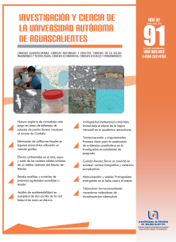New records of long-tailed weasel in areas of influence of Mexican prairie dog colonies at southeast Coahuila
DOI:
https://doi.org/10.33064/iycuaa2024914335Keywords:
Human activities, principal components analysis, habitat characterization, carnivora, active colonie, geographic recordAbstract
In this research is reported for the first time to Neogale frenata (Long-tailed weasel) in adjoining active colonies (AC) of Cynomys mexicanus (Mexican prairie dog) at southeast of Coahuila, Mexico. The presence in the place is relevant because it is part of the trophic networks as a predator of many species. In the period from 2018 to 2022 were made six records of individuals at sites associated with medium-wide open grassland in the adjoined areas and inside AC at southeast of Coahuila, Mexico. By literature review validated the presence of the species in the study area, finding that the records are new and not reported in another source. The management of the pasture of the area studied is directed to livestock and the low population density of human settlements were conditions that favoured the presence of the N. frenata.
Downloads
References
• Baker, R. H. (1956). Mammals of Coahuila, México. University of Kansas Publications, Museum of Natural History, 9, 125-335.
• Baker, R. H. (1983). Michigan Mammals. Michigan: Michigan State University Press.
• Barnes, A. M. (1993). A review of plague and its relevance to prairie dog populations and the black-footed ferret. En J. L., Oldemeyer, D. E., Biggins, & B. J. Miller (Ed.). Proceedings of the symposium on the management of prairie dog complexes for the reintroduction of the black-footed ferret (pp. 28-38). Washington: U.S. Department of the Interior, Fish and Wildlife Service.
• Cully, J. F. (1993). A review of plague and its relevance to prairie dog populations and the black-footed ferret. En J. L., Oldemeyer, D. E., Biggins, & B. J. Miller (Ed.). Proceedings of the symposium on the management of prairie dog complexes for the reintroduction of the black-footed ferret (pp. 38-48). Washington: U.S. Department of the Interior, Fish and Wildlife Service.
• Contreras-Moreno, F. M., De la Cruz, A. J., Juárez-López, R., & Hidalgo-Mihart, M. G. (2015). Primer registro de la comadreja (Mustela frenata) en el estado de Campeche, México. Acta Zoológica Mexicana, 31, 488-490. DOI: https://doi.org/10.21829/azm.2015.3131094
• Hammer, Ø. & Harper, D. A. T. (2006). Paleontological data analysis. Malden: Blackwell Publishing. doi: 10.1002/9780470750711 DOI: https://doi.org/10.1002/9780470750711
• Helgen, K., & Reid, F. (2016). Mustela frenata. The IUCN Red List of Threatened Species. Gland. Recuperado de https://www.iucnredlist.org/species/41654/45213820
• Heredia-Pineda, F. J., Lozano-Cavazos, E. A., Romero-Figueroa, G., Alanís-Rodríguez, E., Tarango-Arámgula, L. A., & Ugalde-Lezama, S. (2017). Interspecific foraging relationships of the Worthen´s sparrow (Spizella wortheni) during the non-breeding season in Coahuila, Mexico. Revista Chapingo Serie Zonas Áridas, 16, 23-36. doi: 10.5154/r.rchsza.2017.11.009 DOI: https://doi.org/10.5154/r.rchsza.2017.11.009
• Graham, I. M. (2002). Estimating weasel Mustela nivalis abundance from tunnel tracking indices at fluctuating field vole Microtus agrestis density. Wildlife Biology, 8, 279-287. doi: 10.2981/wlb.2002.025 DOI: https://doi.org/10.2981/wlb.2002.025
• INEGI. (2019). Continuo de Elevaciones Mexicano 3.0 (CEM 3.0). Ciudad de México. Recuperado de https://www.inegi.org.mx/app/geo2/elevacionesmex/
• Leopold, A. S. (1987). Fauna silvestre de México. (4ª. Reimp.). Ciudad de México: Pax-México.
• Martorell, C., & Peters, E. (2005). The measurement of chronic disturbance and its effects on the threatened cactus Mammillaria pectinifera. Biological Conservation, 124, 197-207. doi: 10.1016/j.biocon.2005.01.025 DOI: https://doi.org/10.1016/j.biocon.2005.01.025
• Patterson, B. D., Ramírez Chaves, H. E., Vilela, J. F., Soares, A. E. & Grewe, F. (2021). On the nomenclature of the American clade of weasels (Carnivora: Mustelidae). Journal of Animal Diversity, 3, 1-8. doi: 10.29252/JAD.2021.3.2.1 DOI: https://doi.org/10.52547/JAD.2021.3.2.1
• Secretaría de Medio Ambiente y Recursos Naturales. (2020). Norma Oficial Mexicana NOM-059-2010, protección ambiental-Especies nativas de México de flora y fauna silvestres- Categorías de riesgo y especificaciones para su inclusión, exclusión o cambio-Lista de especies en riesgo. Ciudad de México. Recuperado de https://www.profepa.gob.mx/innovaportal/file/435/1/NOM_059_SEMARNAT_2010.pdf
• Rykiel, Jr. E. J. (1985). Towards a definition of ecological disturbance. Australian Journal of Ecology, 10, 361-365. doi: 10.1111/j.1442-9993.1985.tb00897.x DOI: https://doi.org/10.1111/j.1442-9993.1985.tb00897.x
• Sánchez-Sánchez, M., Morales-Ramos, V., Bucio-Alanís, L., & Díaz-Cárdenas, L. (2015). Producción de huevo en cafetales: una opción de diversificación productiva. Agroproductividad, 8, 72-75.
• Sheffield, S. R., & Thomas, H. H. (1997). Mustela frenata. Mammalian Species, 570, 1-9. doi: 10.1644/0.570.1 DOI: https://doi.org/10.2307/3504434
• Valverde, P., Zavala-Hurtado, J. A., Jiménez-Sierra, C., Rendón-Aguilar, B., Cornejo-Romero, A., Rivas-Arancibia, S., López-Ortega, G., & Pérez-Hernández, M. A. (2009). Evaluación del riesgo de extinción de Mammillaria pectinifera, cactácea endémica de la región de Tehuacán-Cuicatlán. Revista Mexicana de Biodiversidad, 80, 219-230. doi: 10.22201/ib.20078706e.2009.001.598 DOI: https://doi.org/10.22201/ib.20078706e.2009.001.598
• Vilà, M., Bacher, S., Hulme, P., Kenis, M., Kobelt, M., Nentwig, W., Sol, D., & Solarz, W. (2006). Impactos ecológicos de las invasiones de plantas y vertebrados terrestres en Europa. Ecosistemas, 15, 13-23.
Published
How to Cite
License
Copyright (c) 2024 Feliciano Heredia-Pineda, Guillermo Romero-Figueroa, Mario Alberto García-Aranda, Dino Ulises Gonzalez-Uribe

This work is licensed under a Creative Commons Attribution-NonCommercial-ShareAlike 4.0 International License.
Las obras publicadas en versión electrónica de la revista están bajo la licencia Creative Commons Atribución-NoComercial-CompartirIgual 4.0 Internacional (CC BY-NC-SA 4.0)









